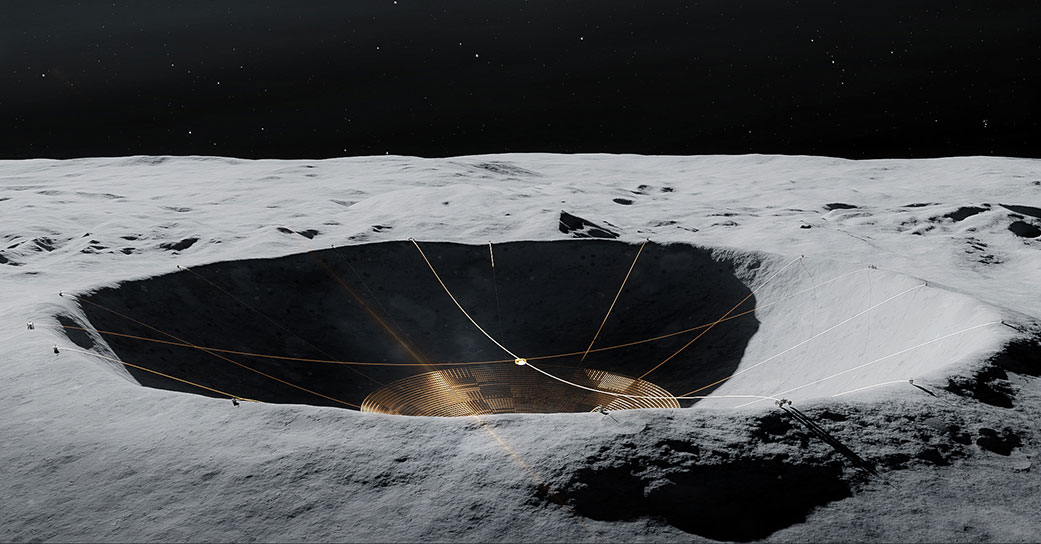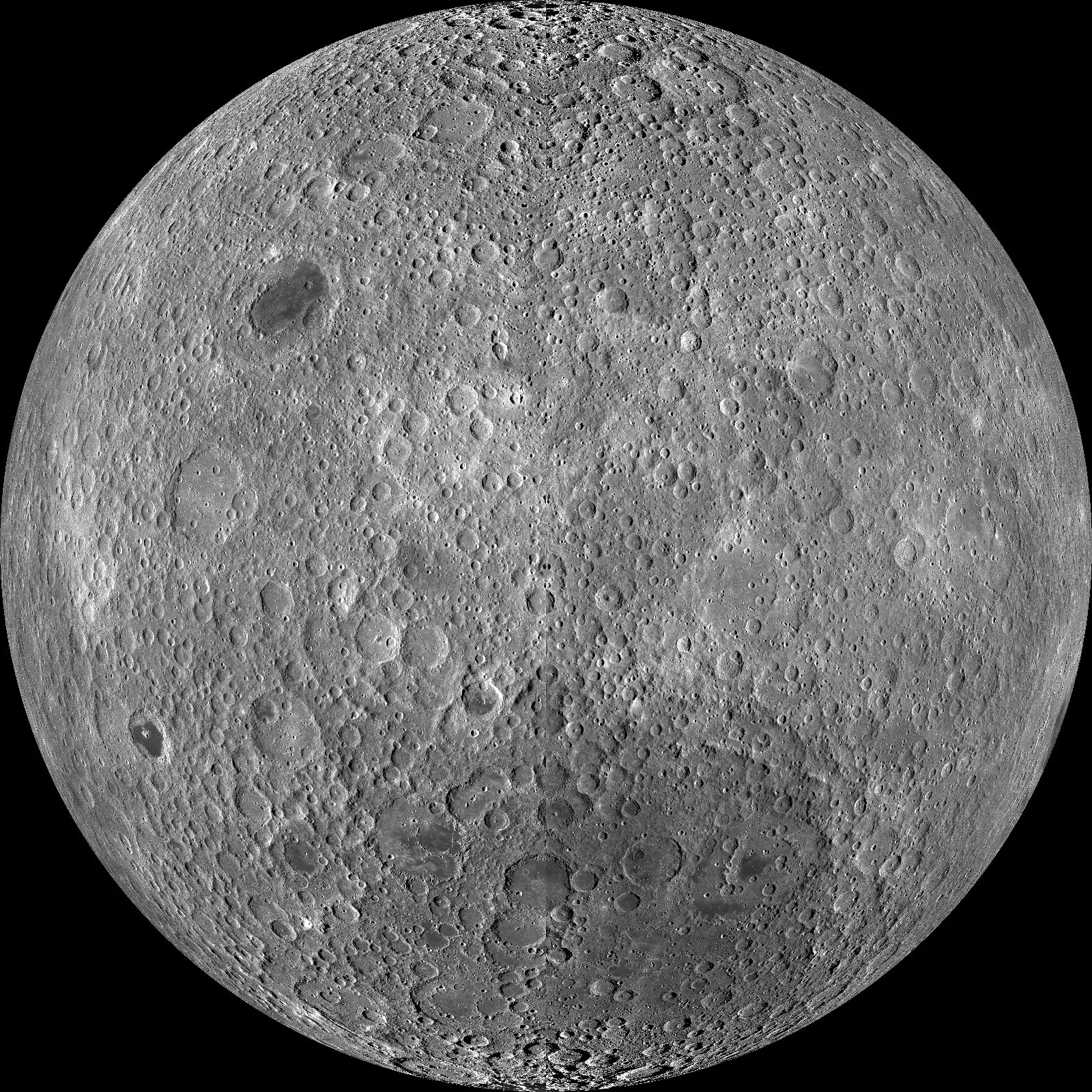
Platform to Study the Solar System
The Moon provides scientists with a platform for studying the entire solar system.
The Moon serves as a platform for understanding the rest of the solar system. Its lack of an atmosphere allows the full electromagnetic spectrum to be visible from the lunar surface. The far side of the Moon is the only known place in the Solar System permanently shielded from Earth’s radio noise, meaning it's an ideal location to perform radio astronomy, which can enable astrophysicists to investigate a period of time known as the Dark Ages, an epoch shortly after the Big Bang when stars and galaxies had not yet formed in the expanding Universe.

The far side of the lunar surface is captured here like never before. The Lunar Reconnaissance Orbiter Camera (LROC) Wide Angle Camera (WAC) captured this mosaic in monochrome mode. This pieced together photo was the first of its kind as a resource to the scientific community.
NASA/GSFC/Arizona State University.




























